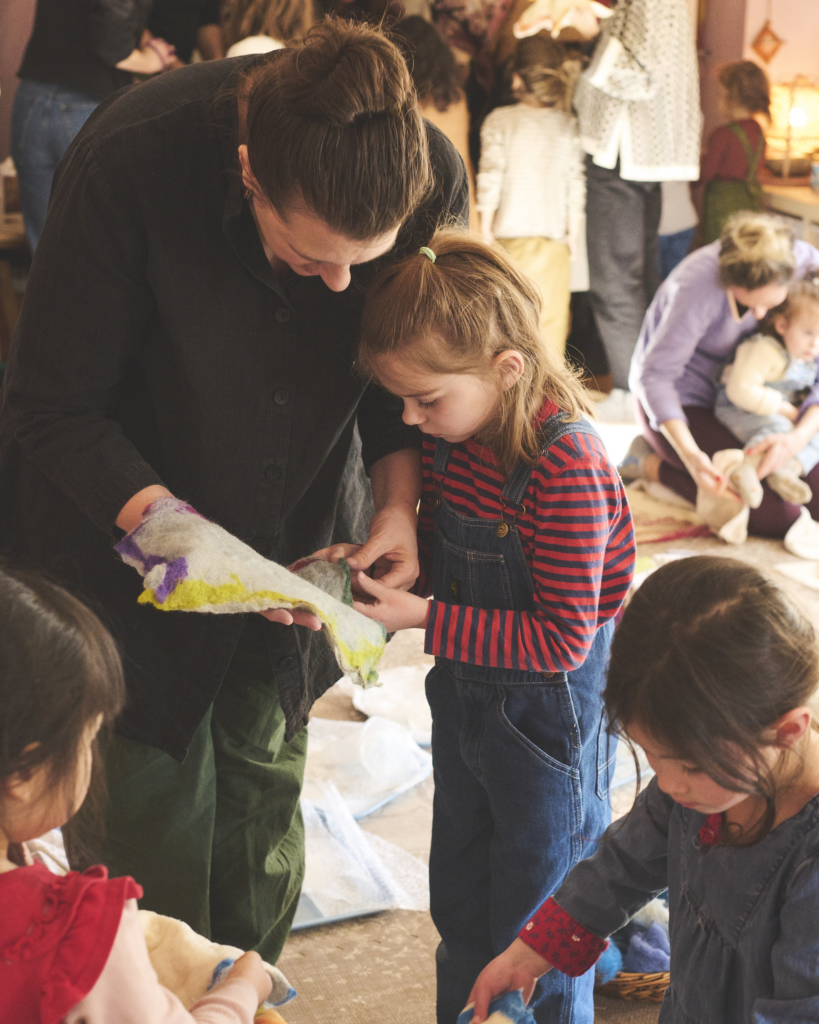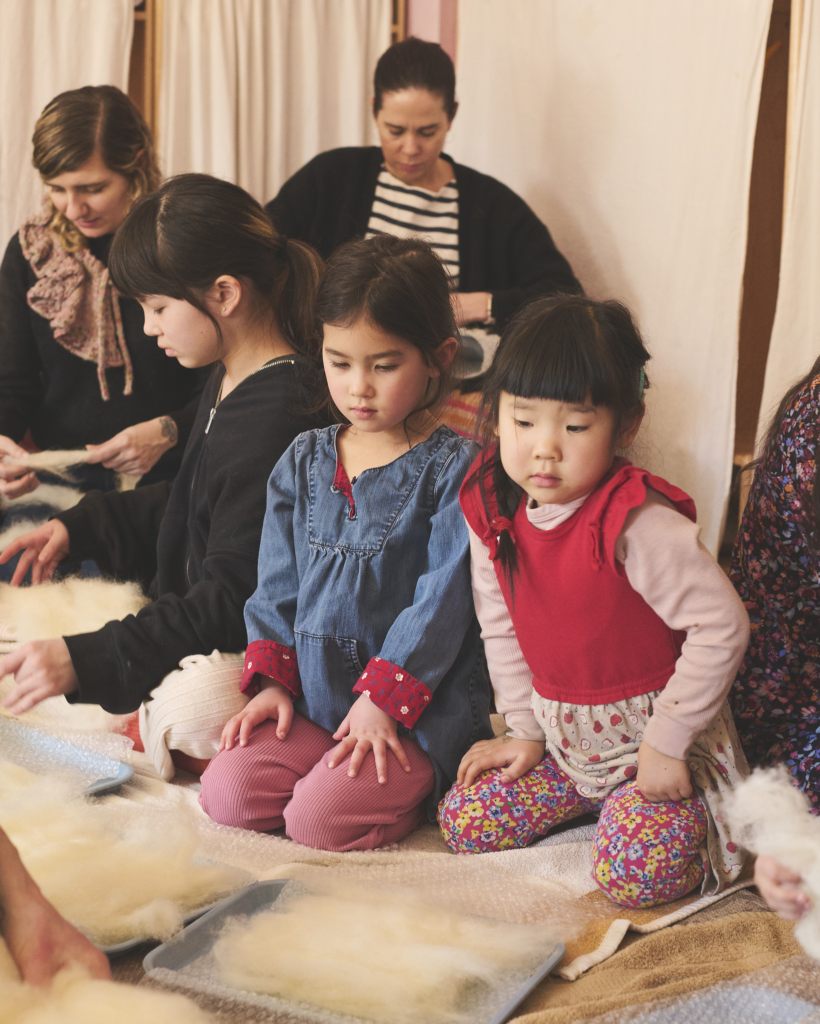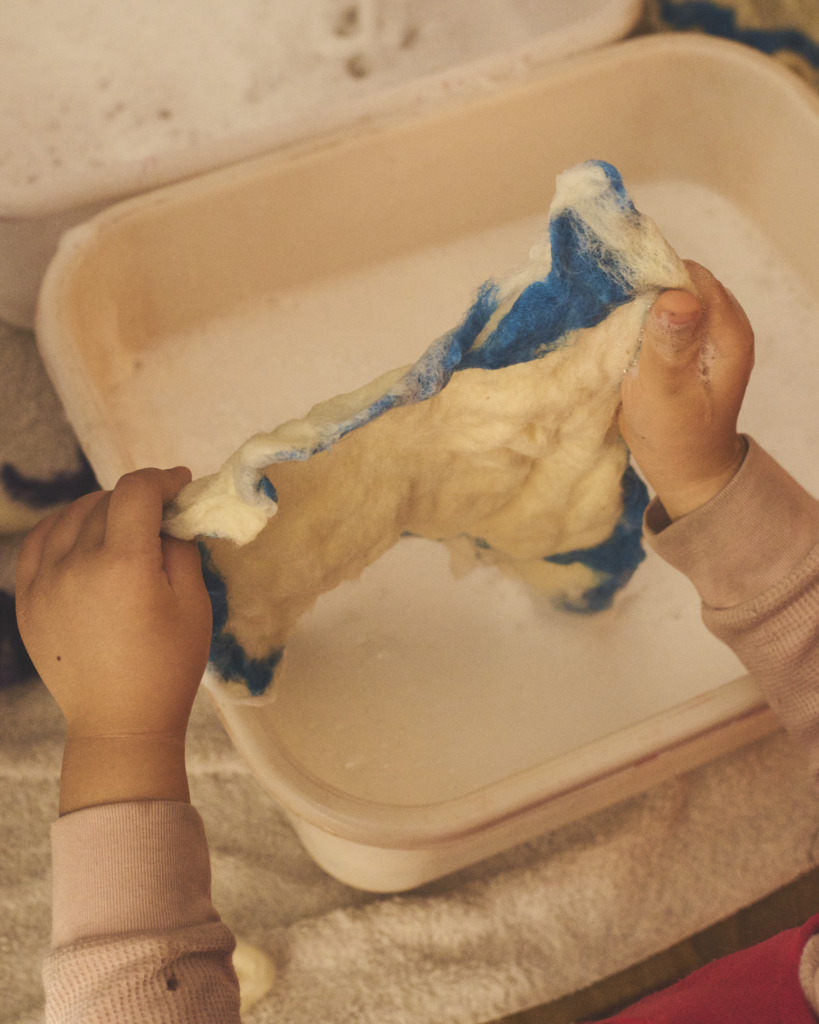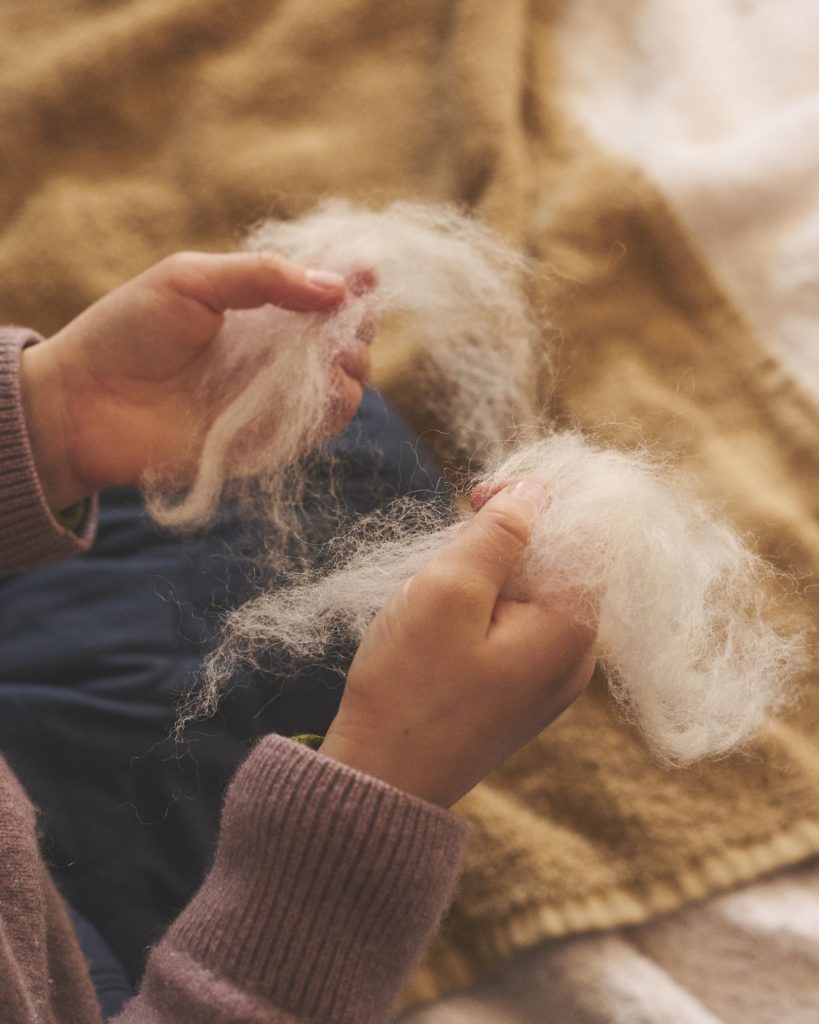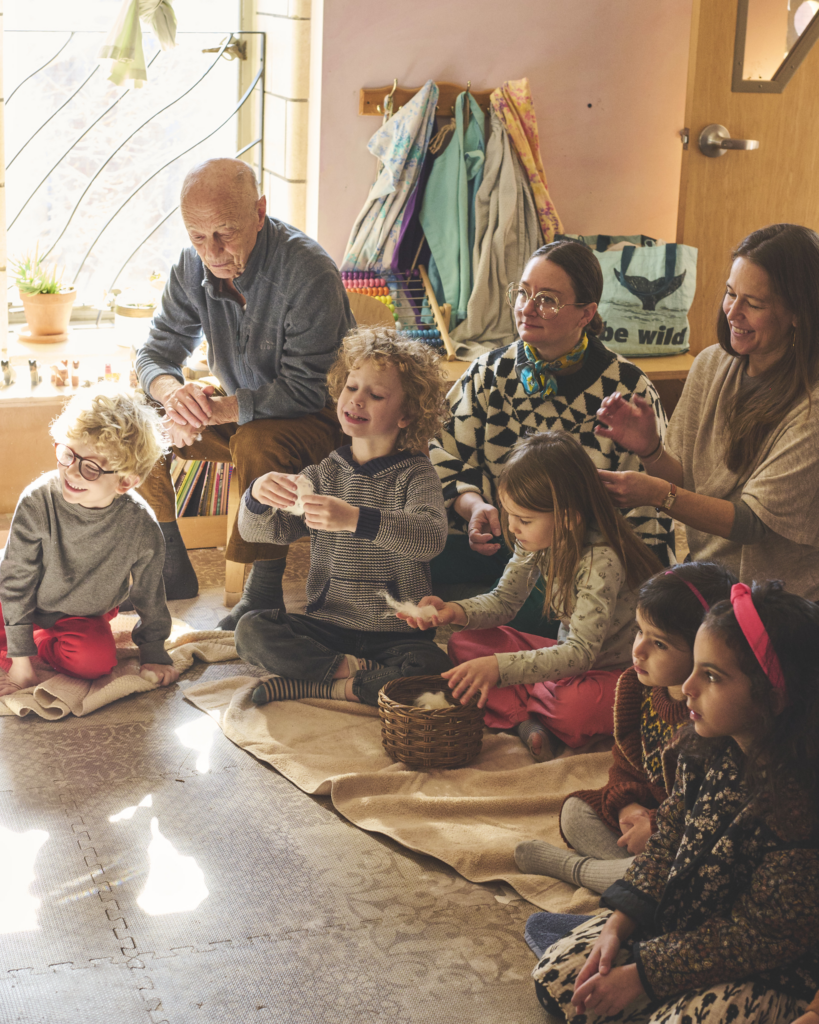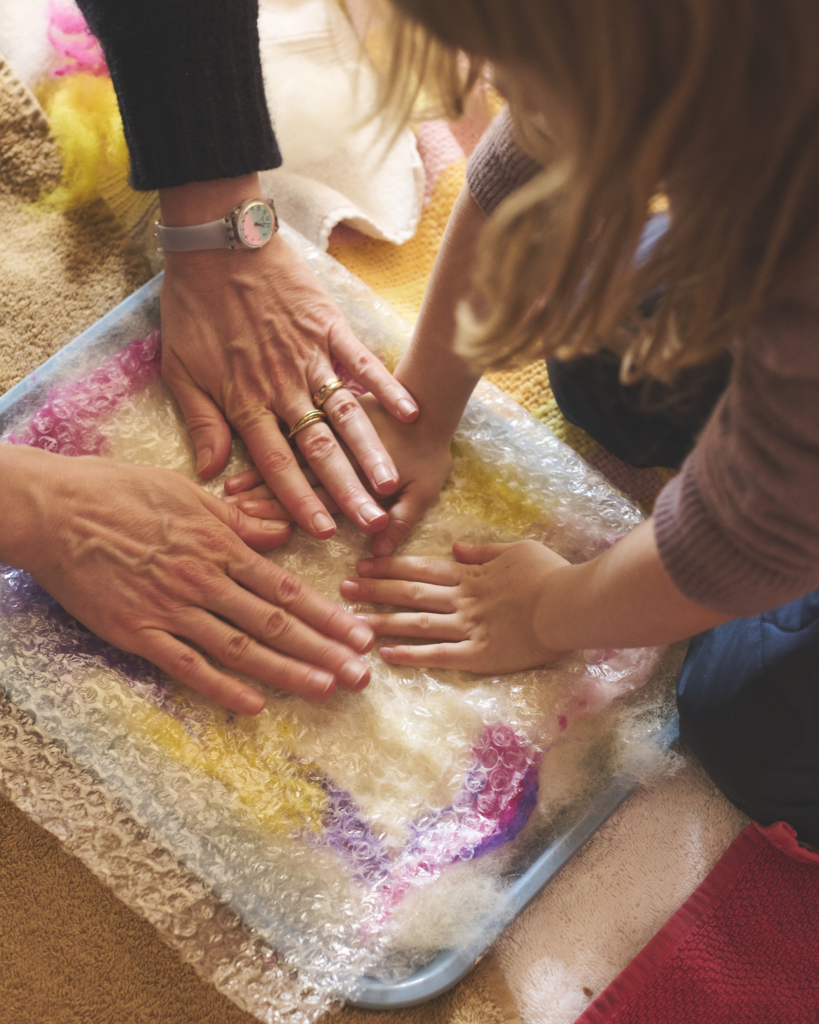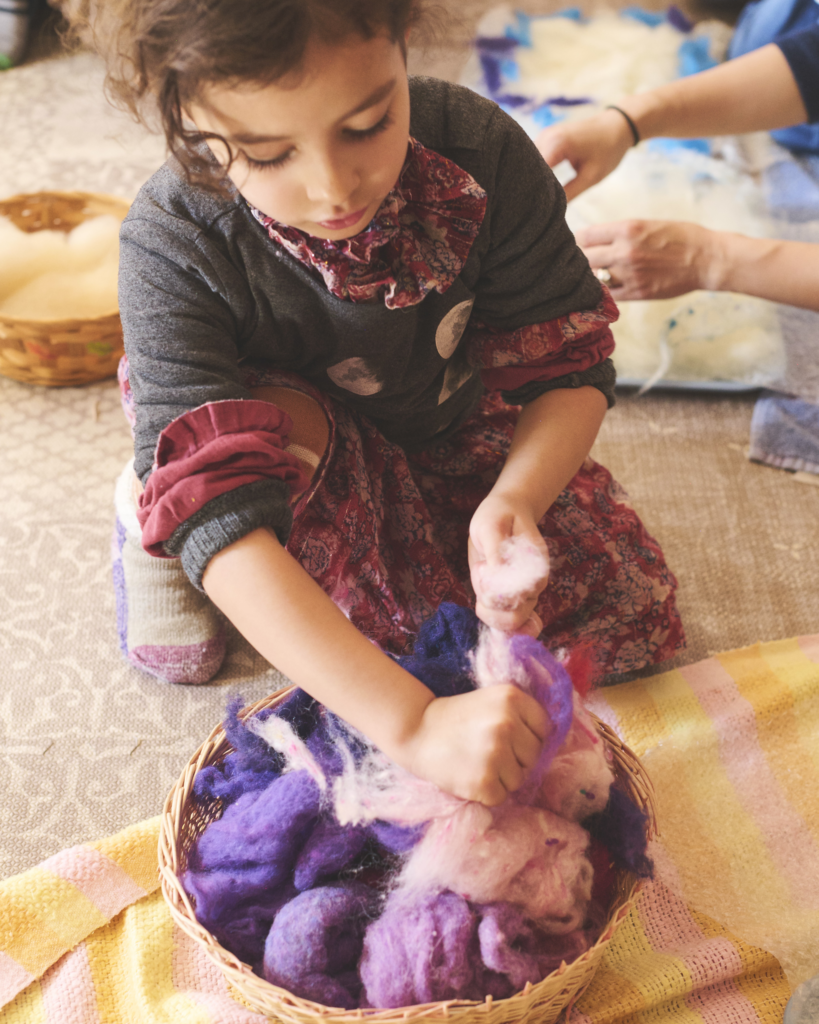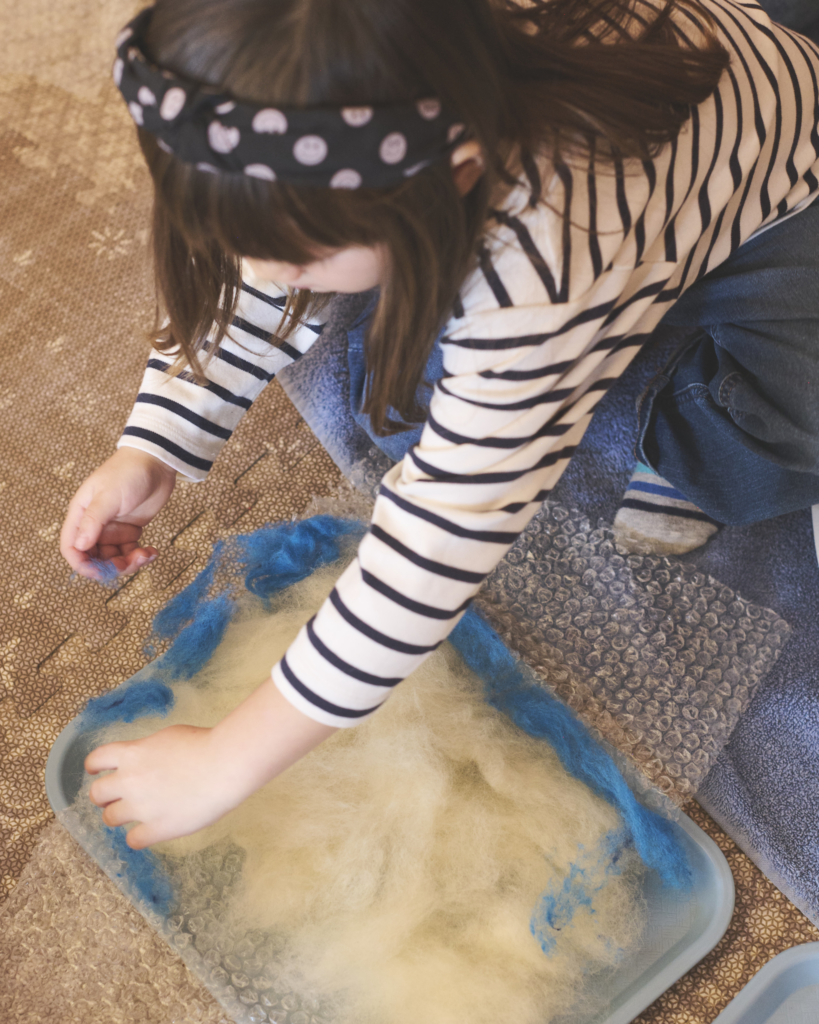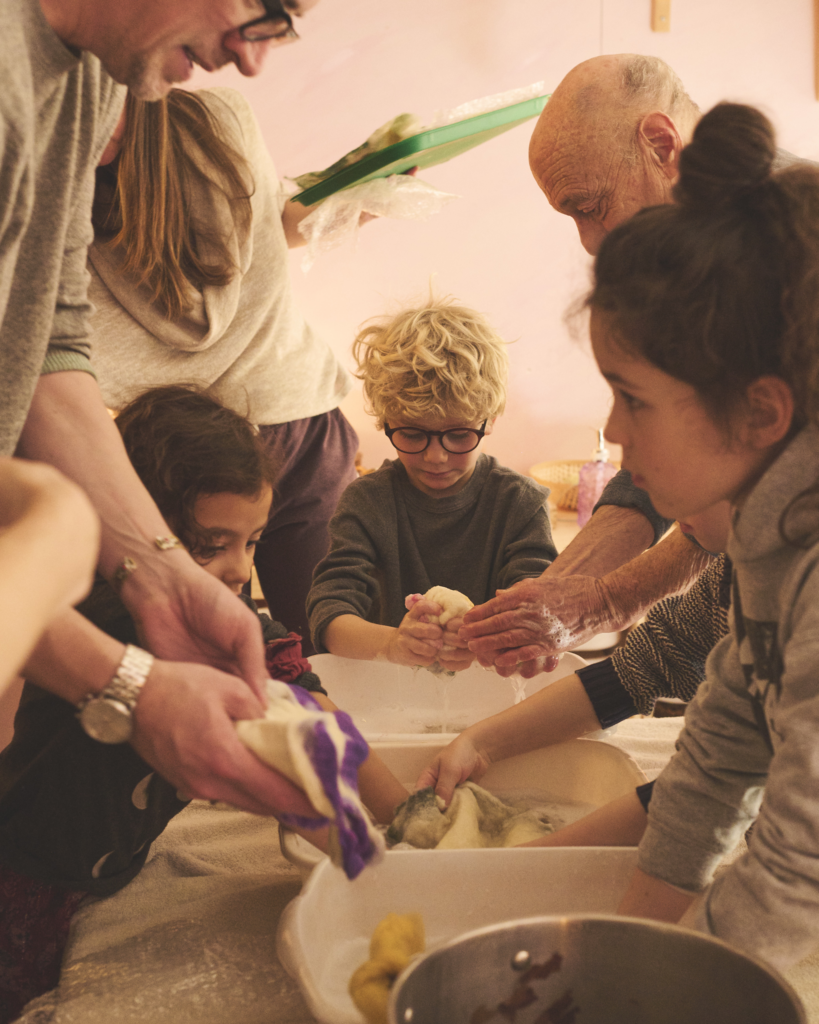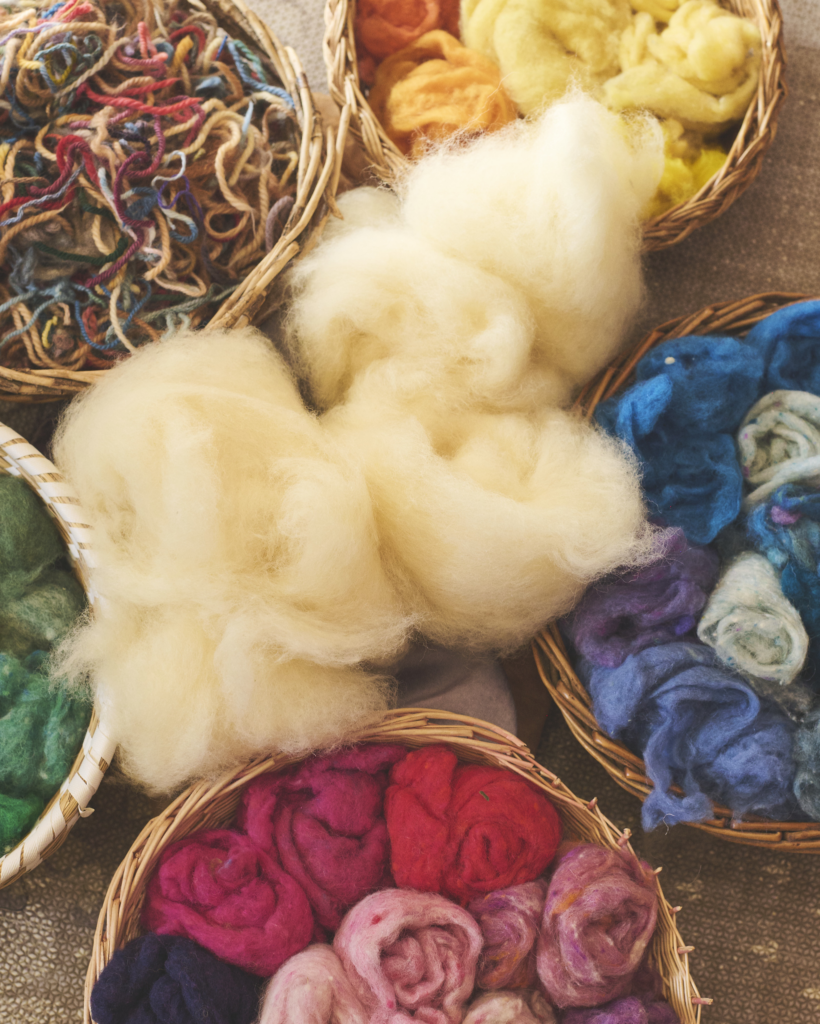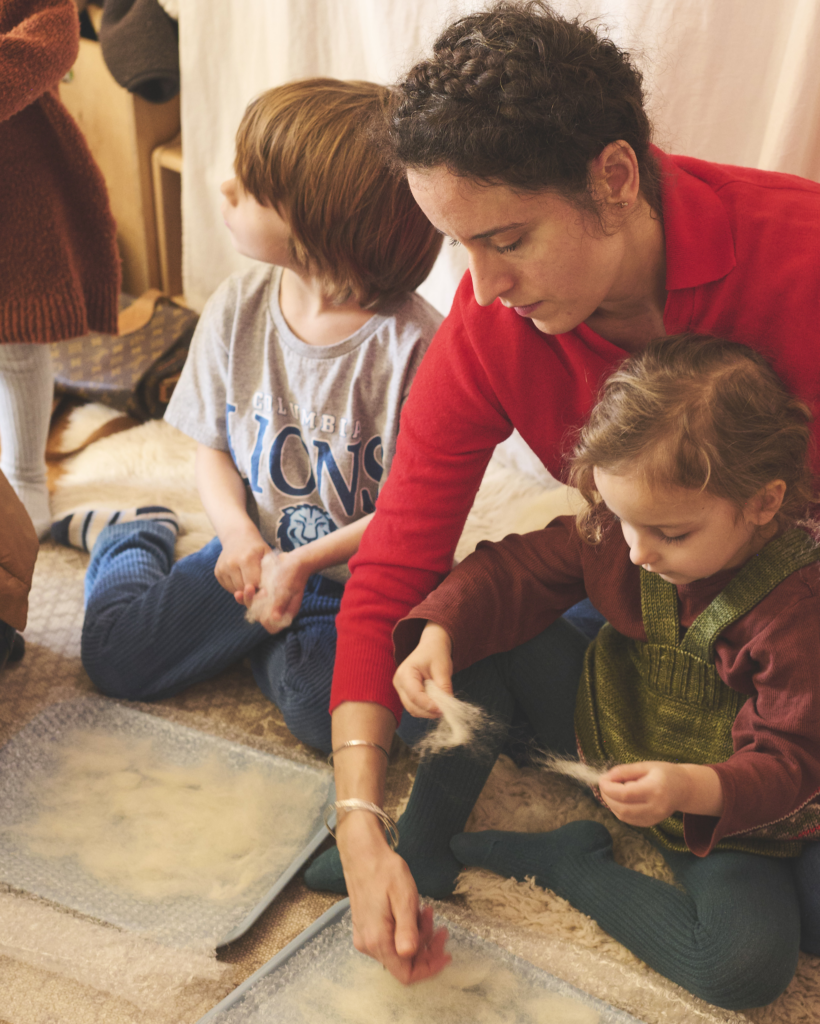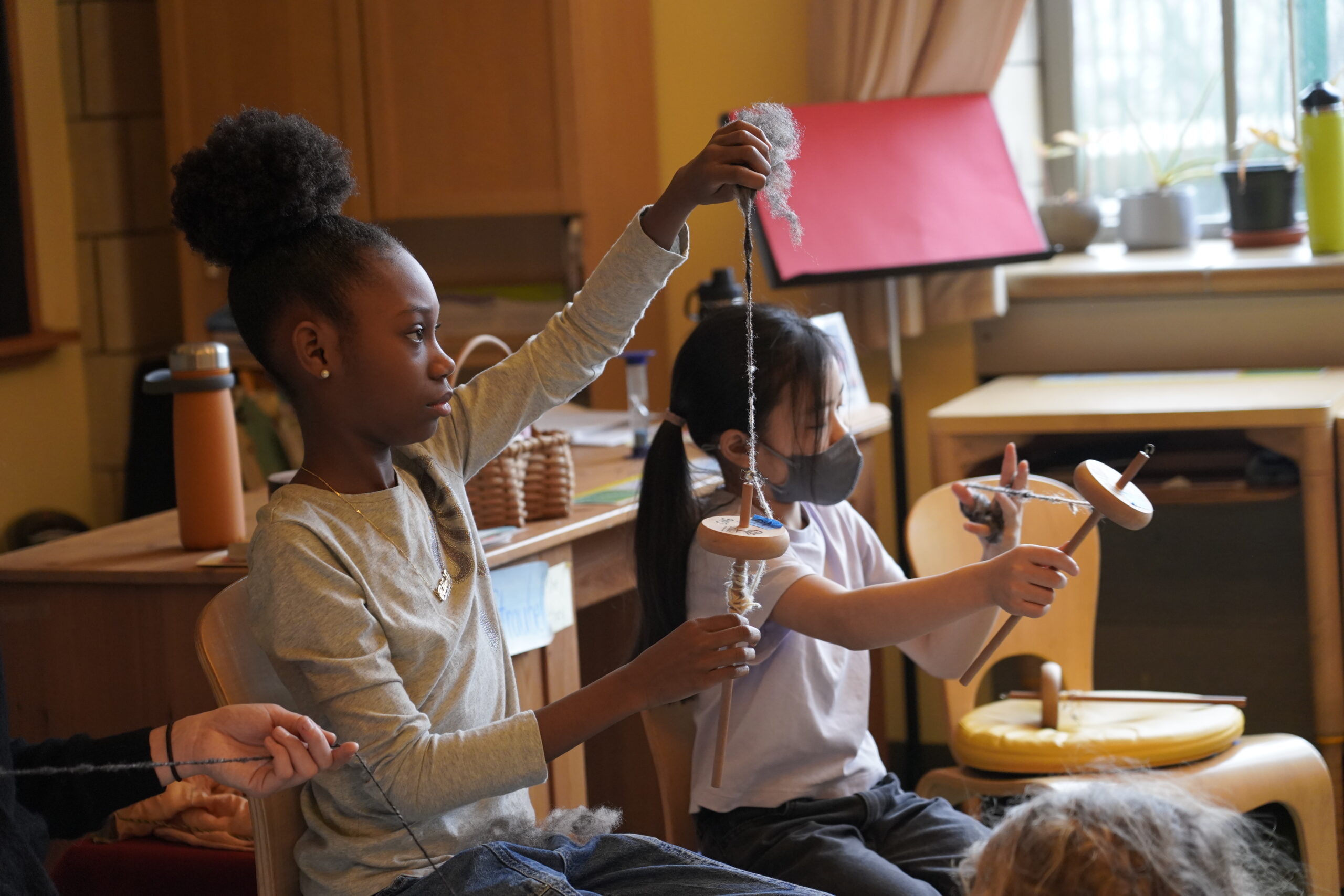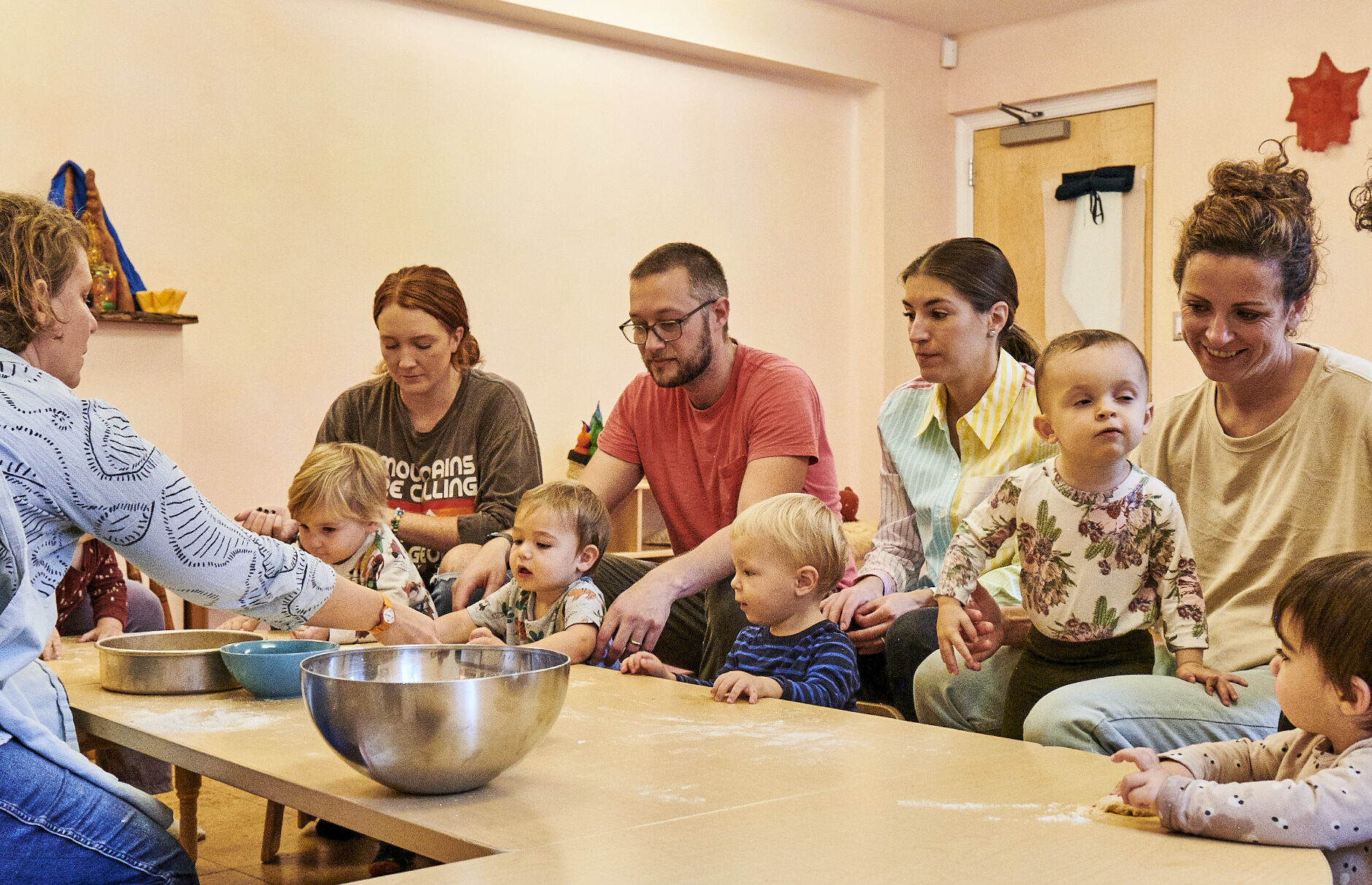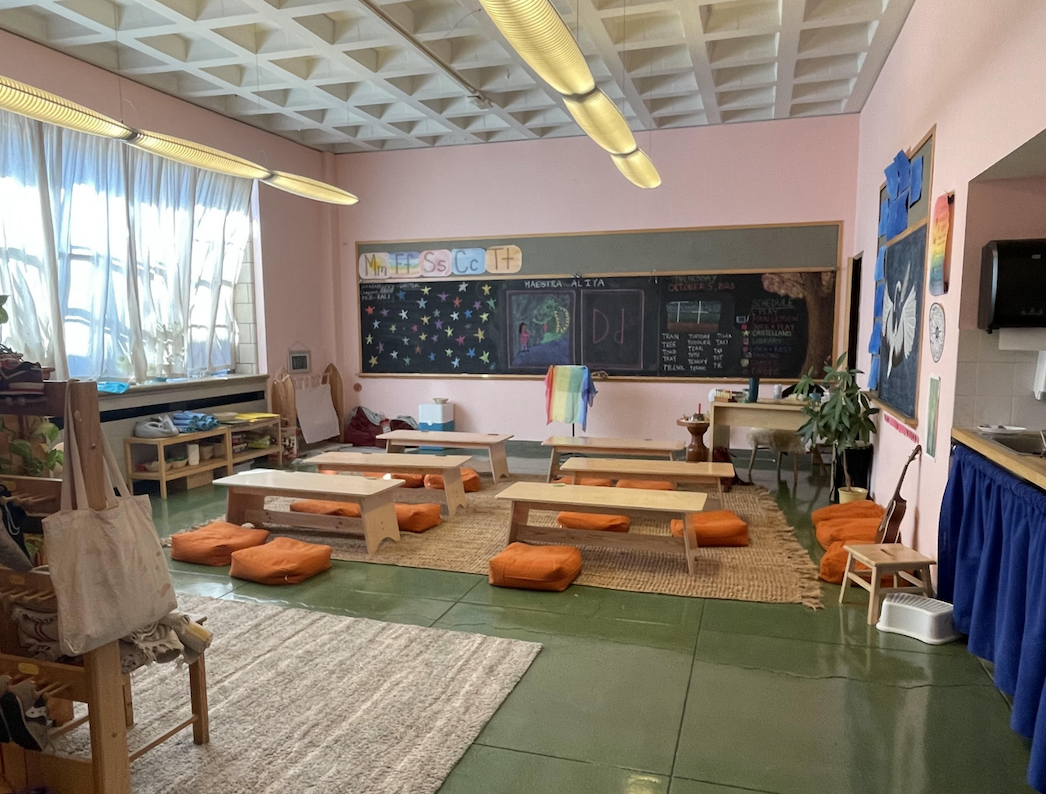Ms. Gillian, Early Childhood Section Chair, and Ms. Dorke, our very own handwork teacher, have been offering free crafting sessions to the community this Spring. Participants explored ‘The Wonder of Wool’ through wet felting, natural dyeing, sculpting and storytelling. At Brooklyn Waldorf, students interact with wool in various ways over the course of their education in handwork class.
In Waldorf Education, handwork refers to the practice of incorporating hands-on activities and crafts into the curriculum to engage students in creative and practical learning experiences. Handwork encompasses a wide range of activities including knitting, crocheting, sewing, embroidery, woodworking, felting, and more.
The emphasis on handwork in Waldorf Education serves multiple purposes:
- Development of Fine Motor Skills: Engaging in handwork activities helps children develop fine motor skills, hand-eye coordination, and manual dexterity.
- Creativity and Self-Expression: Handwork provides opportunities for students to express themselves creatively through the materials they work with and the projects they create.
- Cognitive Development: Handwork activities require planning, problem-solving, and sequential thinking, fostering cognitive development in students.
- Connection to the Natural World: Many handwork materials, such as wool, wood, and natural fibers, connect students to the natural world, promoting an appreciation for nature and sustainability.
- Therapeutic Benefits: Engaging in repetitive, rhythmic handwork activities can have a calming and therapeutic effect, promoting relaxation and focus.
- Cultural and Historical Awareness: Handwork often involves traditional crafts and techniques, providing students with a connection to cultural and historical practices.
There are several reasons why Waldorf handwork classrooms use wool specifically:
- Natural Material: Wool is a natural fiber obtained from sheep, making it biodegradable and environmentally friendly. It aligns with the Waldorf philosophy of using natural materials whenever possible, fostering a connection to the natural world.
- Warmth and Comfort: Wool is known for its warmth and softness, making it pleasant to work with and wear. This aspect enhances the sensory experience for students engaging in handwork activities.
- Versatility: Wool can be used in a variety of handwork projects, including knitting, felting, and weaving. Its versatility allows for a wide range of creative expression and skill development.
Overall, handwork in Waldorf Education is seen as an integral part of the holistic approach to education, nurturing students’ intellectual, emotional, and physical development. Wool is valued in Waldorf handwork for its natural properties, versatility, and potential to support holistic development in students.


